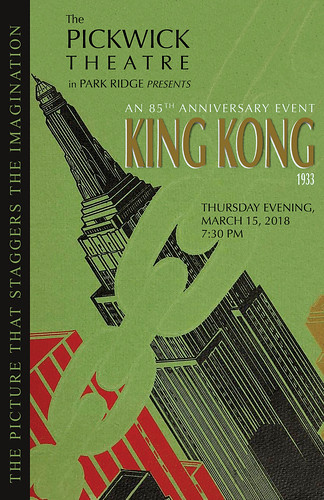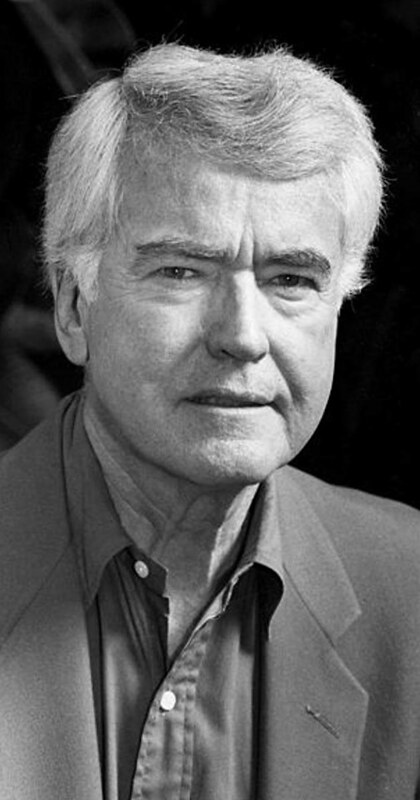On September 27, 2019, the film community lost a legend. Historian Rudy Behlmer, best known as the author of such books as Memo From David O. Selznick, passed away at the age of 92. Fans of classic cinema will instantly recognize his name from the many articles, books, and commentaries he has provided– and documentaries he has appeared in– over the decades. Whether it was an Errol Flynn swashbuckler or a classic Universal monster, if Rudy was talking about it, you knew it would be sound film study. He spoke with an authority that his peers respected. He set the bar for the next generation of scholars. In our modern age where so much information is culled from questionable or secondary sources, Rudy’s wealth of knowledge emanated from first-hand experience; he had known many of the pioneers in the business, including the man behind King Kong.
On a personal note, there have only been a handful of film historians who have made a significant impact in my life. Some of these names include William K. Everson and Kevin Brownlow. Rudy Behlmer is part of this elite group. Though he was no longer physically able to travel for a guest appearance in Park Ridge, Rudy did provide us with a wonderful introduction which we included in our 85th anniversary program for King Kong (1933). These commemorative programs were passed out on the night of March 15, 2018. When I spoke to Rudy by telephone shortly after the screening, he expressed his appreciation for being included in our Kong celebration. During the course of that call, I also conveyed my gratitude to him for inspiring me to share the love of cinema.
~MCH
The following was Rudy’s introduction, which he wrote specifically for our screening at the Pickwick Theatre in Park Ridge.
My Friend Kong
by
Rudy Behlmer
As a small child, when I first started going to the movies, I missed King Kong on its original release in 1933 because, I’m sure my parents thought I wasn’t up to it at the time. So, when it was given its first theatrical reissue in 1938, I was there with bells on and thought it was terrific. And, of course, I went to the 1942, 1946, 1952, and 1956 theatrical reissues that followed.
The film had lost some of its original 1933 footage starting with that first reissue because of the Production Code having gotten “teeth” in the censorship area, so it wasn’t until decades later when the missing footage was found and reinserted, that I was able to finally see Kong in its original running time.
In 1965, I telephoned Kong’s creator Merian C. Cooper, who then lived in Pacific Palisades near Los Angeles with his wife, actress Dorothy Jordan. He granted me an interview one Saturday when I told him I would like to do an article on his entire career for the magazine Films in Review. I brought my then-current Wollensak quarter-inch tape recorder to his home and spent the afternoon asking various questions and being absolutely mesmerized by his answers.
We discussed his early projects with friend and partner Ernest B. Schoedsack – Grass (1925), Chang (1927), and The Four Feathers (1929), and other works before, after, and including King Kong (with Schoedsack) during the long afternoon. I did a follow-up interview a week or so later, and then had a couple of lunches with him in Pacific Palisades before completing the article. It was published in the January 1966 issue of Films in Review. The piece ended with Cooper’s projects at the time, his work with Cinerama productions, his partnership with John Ford films, etc.
Then, just about when the article came out, I started producing the original commercials that marked the debut of Poppin’ Fresh, the Pillsbury Doughboy, for the Leo Burnett advertising agency at Cascade Pictures’ special effects stage in Los Angeles. The little doughboy was executed in the same stop-motion manner as the mighty Kong had been years before, with the additional ability that he would have several changing talking heads with every vowel, consonant, whistle, and laugh being represented. Jim Danforth, his primary animator for the first years, did most of the work on the doughboy. Each late morning when the doughboy commercials were first being photographed, we were looking at the dailies of the previous day’s work. Talk about brief! The screening ended after a minute or so. Although the doughboy commercials had a total running time of 60-seconds, which was the fashion of all national commercials at the time, they changed to 30-seconds in length after two or three years, as did the bulk of national commercials. The extremely knowledgeable special effects technician Phil Kellison ran that unit at Cascade Studios and they had first-rate people working at the time. And it was there that I met Bob Burns who was in possession of one of Kong’s original armatures.
King Kong has continued to intrigue me over the decades, and I was always adding new finds in my research into papers of various individuals, interviews with other persons, and studio collections. The 2010 Blu-ray disc of Kong for Warner Home Video included a well-illustrated book, which is my most complete essay on the history of the making of the film.
A “Happy 85th” to Kong and your anniversary screening! And after all these decades, he continues to fascinate. I think we’re safe in calling him a “hardy perennial,” in addition to being “The Eighth Wonder of the World.”
Copyright © 2017 Rudy Behlmer.

